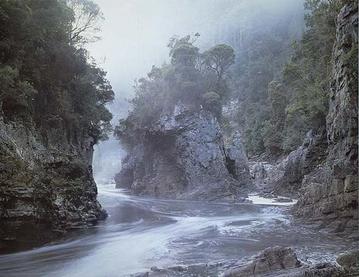Create and Conserve in 2020: Extend Your Love for Landscape Photography to the Land
![]()
My country is burning. In the summer of 2019–20, fires raged across Australia. In my home state of New South Wales, over 3,400,000 hectares have gone up in flames—an area larger than the entire country of Wales. The land, habitats, and lives lost continues to rise.
This is a reflection on how landscape photographers—who so often profess fondness for being out in nature and the environment—can act to conserve the land they love to capture. Because it’s worth saving and restoring. It’s been done before.
Landscape Photography Conservation in Action
In 1983, Tasmania’s Franklin River was under threat.
Located in the unspoilt Southwest Wilderness region, the proposed Franklin Dam construction would flood the river system, destroying pristine habitats and ancient Aboriginal art. After years of protracted campaigning, rallies and blockades from activists, the project steamrolled ahead, supported by the State and Federal governments.
On 2 March—three days before the upcoming national election—the Tasmanian Wilderness Society ran full-page color ads in Australia’s two major metro newspapers, The Sydney Morning Herald and The Age. The ads largely comprised of the photo Morning Mist, Rock Island Bend, Franklin River by Peter Dombrovskis. The image depicts a foggy morning on the Franklin as the river sweeps through canyon walls with pristine wilderness crowning the land above. A scene that would forever be lost had the dam been built.
Accompanying Dombrovskis’s photo in the newspaper ad was the tagline, “Could you vote for a party that will destroy this?”

“I knew that if we were going to win the campaign we needed to get pictures of the river back to people who could never get there,” said Bob Brown, director for the Tasmanian Wilderness Society. Brown went on to lead the Australian Greens, growing the political party to become the third largest in Australia.
Three days after the image was published, the left-leaning Labor Party won the election in a landslide from the incumbent right-leaning Liberals who had been in power for 7 years. The new Prime Minister Bob Hawke vowed to stop the dam and his government passed the World Heritage Properties Conservation Act 1983. The act prohibited Franklin River dam-related clearing, excavation and building activities.
Dombrovskis’s image helped to shift public awareness, overthrow a government and protect a stunning stretch of wilderness for generations to come. If one image from one landscape photographer can have this great an impact, picture the potential of the entire profession.
Conservation You Can Enable
Keep photographing stunning landscapes. Capturing and sharing the beauty of natural scenes inspires others to better appreciate and value the world around them. As always, be respectful of the land and vegetation you pass through—leave only footprints.
Consider donating a proportion of your print sales. Without healthy ecosystems, more locations will bear the scars of human influence and change. By donating to a charity or conservation fund, your photography can directly preserve and restore local environments. I’ve committed to donating 20% of my print profits to WWF.
Educate others. When a viewer remarks how stunning a particular image is, consider sharing a word or two about the state of the natural environment in which it was taken. When sharing an image on Instagram, can you use the caption text to inform and educate?
Go green when you travel. Adventures to exotic, remote locations—often involving international flights—are part of landscape photography. Yet these trips require energy and resources. To help mitigate the impact of your travel, easy first steps are to use public transport where possible and carbon-offset your emissions for a few dollars.
Landscape photographers are in a privileged position to capture natural beauty and inspire others to care for and conserve the land too. We are a passionate, hardworking collective. By considering how we can conserve when we create—in acts both large and small—together we can help preserve beautiful locations for all to experience.
It’s time to recognise that in order to create stunning landscape imagery, we must conserve stunning landscapes too.
About the author: Mitch Green is an Australian landscape photographer. He can be found via his website, through Instagram, or down by the beach at 5am waiting for sunrise.
Image credits: Header photo by NickCollins